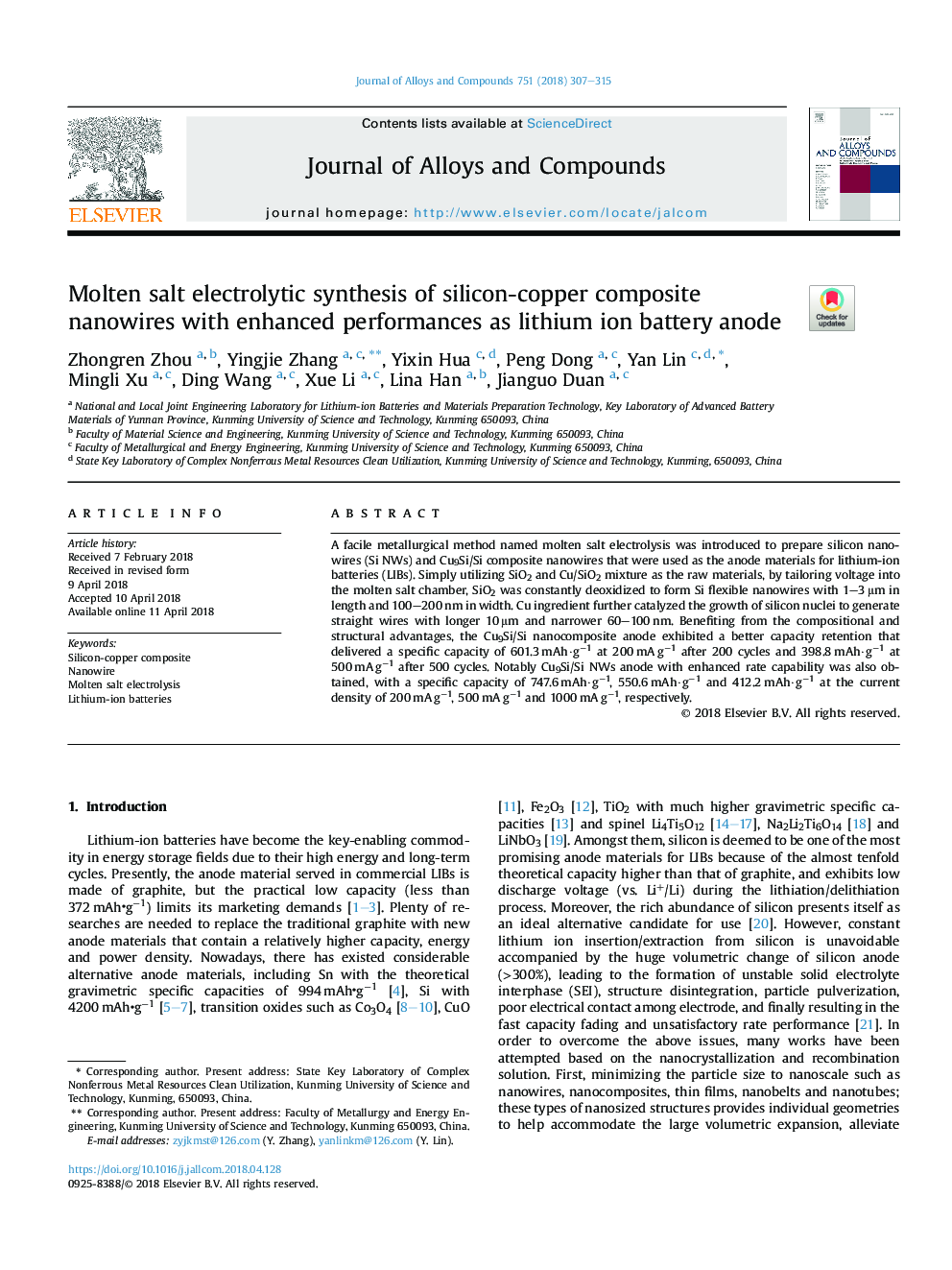| Article ID | Journal | Published Year | Pages | File Type |
|---|---|---|---|---|
| 7991712 | Journal of Alloys and Compounds | 2018 | 9 Pages |
Abstract
A facile metallurgical method named molten salt electrolysis was introduced to prepare silicon nanowires (Si NWs) and Cu9Si/Si composite nanowires that were used as the anode materials for lithium-ion batteries (LIBs). Simply utilizing SiO2 and Cu/SiO2 mixture as the raw materials, by tailoring voltage into the molten salt chamber, SiO2 was constantly deoxidized to form Si flexible nanowires with 1-3â¯Î¼m in length and 100-200â¯nm in width. Cu ingredient further catalyzed the growth of silicon nuclei to generate straight wires with longer 10â¯Î¼m and narrower 60-100â¯nm. Benefiting from the compositional and structural advantages, the Cu9Si/Si nanocomposite anode exhibited a better capacity retention that delivered a specific capacity of 601.3â¯mAh·gâ1 at 200â¯mAâ¯gâ1 after 200 cycles and 398.8â¯mAh·gâ1 at 500â¯mAâ¯gâ1 after 500 cycles. Notably Cu9Si/Si NWs anode with enhanced rate capability was also obtained, with a specific capacity of 747.6â¯mAh·gâ1, 550.6â¯mAh·gâ1 and 412.2â¯mAh·gâ1 at the current density of 200â¯mAâ¯gâ1, 500â¯mAâ¯gâ1 and 1000â¯mAâ¯gâ1, respectively.
Related Topics
Physical Sciences and Engineering
Materials Science
Metals and Alloys
Authors
Zhongren Zhou, Yingjie Zhang, Yixin Hua, Peng Dong, Yan Lin, Mingli Xu, Ding Wang, Xue Li, Lina Han, Jianguo Duan,
